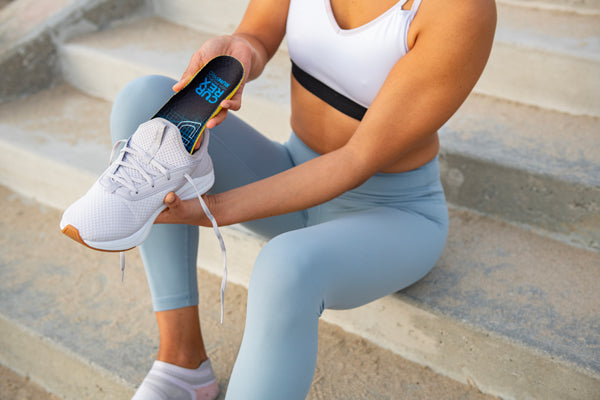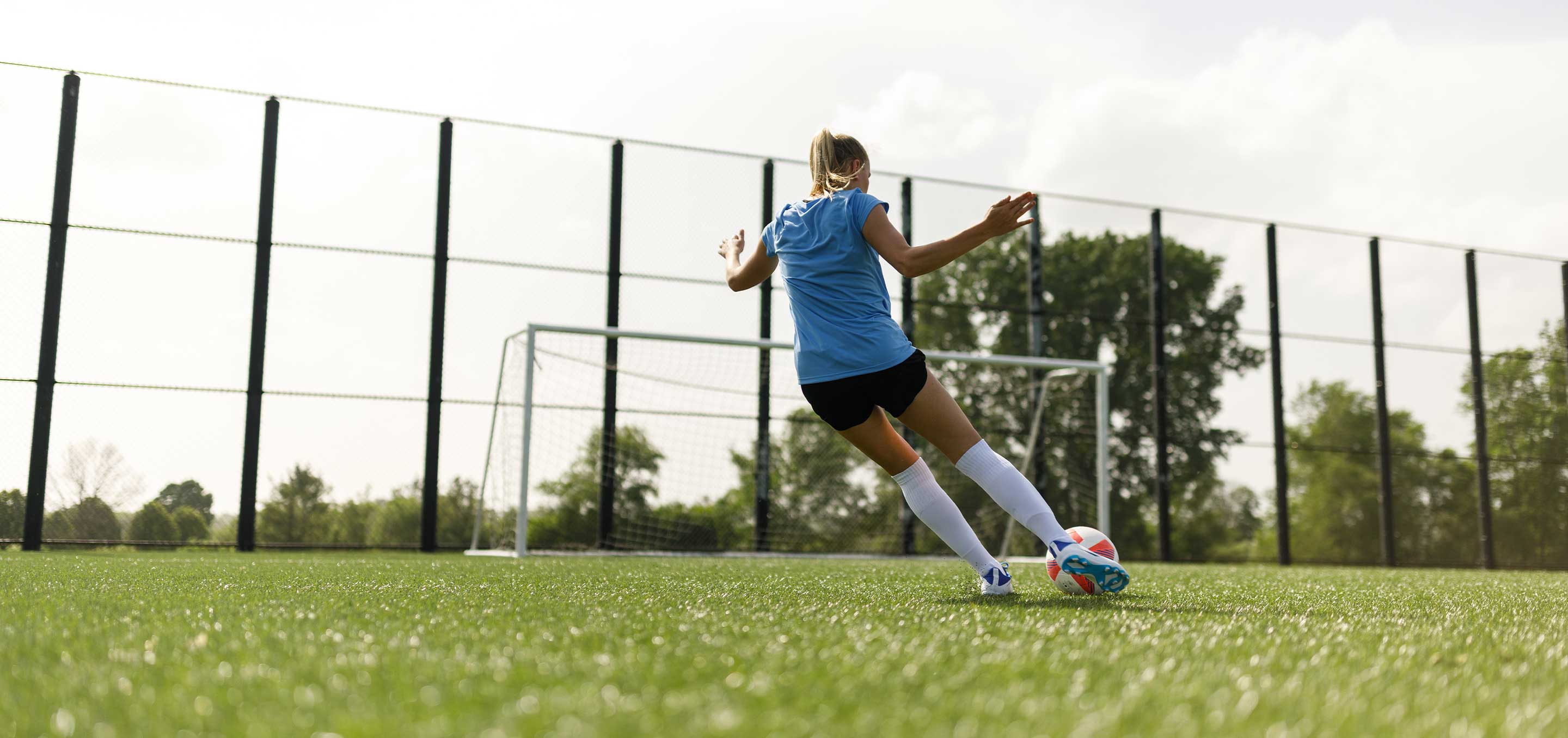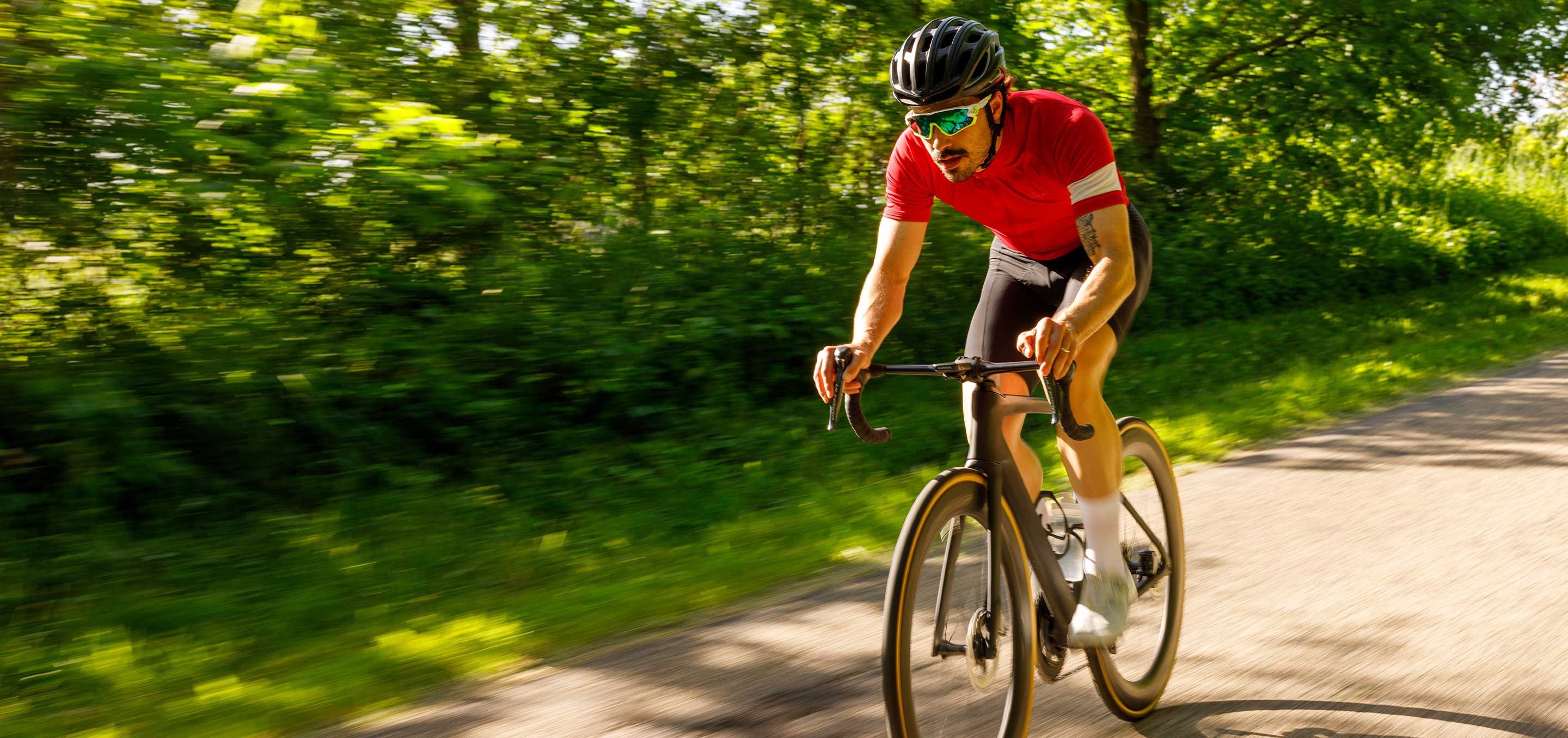Should You Change Your Running Foot Strike?

Correct Your Running Foot Strike, Don't Change It
It’s common talk that changing your foot strike pattern from a heel strike to a more mid or forefoot strike is one way to increase efficiency and prevent injuries when running. But what happens when modifying your natural technique does more harm than good?
This article answers whether changing your foot strike has any real benefits plus what small changes you can make to your form to get more out of your run. See how CURREX® RUNPRO™ insoles are the change you need for a more powerful run with less fatigue.
In This Article:
- What is the best foot strike when running?
- Why your running foot strike matters.
- How to improve your running form.
- Should you change your foot strike and when?

Is there a proper foot strike in running?
How your foot strikes or make contact with the ground before each stride influences the force of impact on your lower body and where that force is distributed. The intensity and direction of impact depend on your individual body and gait.
Most recreational runners practice heel strike running, or where the heel hits the ground first and absorbs the shock, moving up through the shins and knees. Forefoot running, or running on the balls of your feet, puts the strain on the calves and Achilles tendons.
A heel strike pattern puts no more stress on the body than midfoot or forefoot running. Rather, it’s just different forces acting on different areas of the body. The best foot strike for running, and ultimately your perfect running form, is simply the most efficient one that puts the least amount of stress on your feet, legs, knees and hips.
Does foot strike really matter?
Knowing what your foot strike is can help you understand where the forces impact your body and therefore what may be causing reoccurring injuries like chronic stress fractures or knee pain.
Some runners believe that changing to the proper running foot strike matters if you want to increase your speed, travel further distances, and avoid injuries. Evidence suggests that altering your foot strike pattern, however, is not as beneficial as we think.
Research published in the Journal of Sport and Health Science in 2017 concluded that changing to a midfoot or forefoot strike does not improve efficiency, eliminate impact forces, or reduce common running injuries.
In fact, straying from your natural foot strike may increase your chance of injuries by stressing tissues and joints that are not used to these types of force. Recreational runners specifically are discouraged from changing their foot strike pattern.
Proper Running Form & Your Feet
Being a better runner is about avoiding common mistakes in your technique and not forcing yourself into a new, unnatural form. Each runner is unique, and what might work for one person may not work for you.
The following adjustments can help you refine your current running technique and optimize your footwork for a more proper running form.
1. Change Your Running Shoes
The right pair of running shoes can make a significant impact on the efficiency of your run. The most comfortable shoes are often the best, with enough support and targeted cushioning to help absorb shock and reduce pressure.

Heel strikers do well with most standard running shoes that feature plenty of cushion, firmer midsoles for stability, and a low heel-to-toe drop. Running shoes for a front foot strike include minimalist running shoes and lightweight shoes with roomy toe boxes.
2. Add CURREX RUNPRO Insoles
Adding CURREX RUNPRO insoles to your shoes gives you all the benefits of a perfect running form regardless of your foot strike. Our technology driven design helps optimize your technique and prevent common injuries with features like:
- Premium heel cushioning absorbs shock to lessen fatigue and create a more comfortable landing.
- Targeted forefoot cushioning maximizes rebound for a faster, stronger, and more efficient toe-off.
- Dynamic arch support shell flexes with your foot for greater stability and the most comfortable running experience.

CURREX RUNPRO insoles have a zero heel drop and come in three different profiles to match your foot arch, delivering highly customized support with the best fit possible in your running shoes. Use our Insole Finder to discover the best running insole for you.
3. Make Small Adjustments to Your Foot Strike
Minor adjustments to your foot strike and running form, when made gradually, can help you treat regular injuries and may improve overall efficiency. Give your body time to adapt to any changes in your natural gait. For example, it can take up to four months for a heel striker to safely begin forefoot running.
Here are a few modifications to consider if you want to improve your running form:
- Stop overstriding: Many heel strikers overstride, which uses more energy and puts stress on the knees. Keep your feet underneath your body, or your ankle under the flexed knee, to get the most out of each stride.
- Increase your cadence: A high step rate or faster cadence helps fix overstriding problems for heel strikers, while taking shorter strides also conserves energy for forefoot runners.
- Be less aggressive on your toes: By bringing the heel down slightly and running lower on the balls of the feet, forefoot runners reduce strain on their calves and ankles.

Be careful not to make too many changes at once, as this can be physically and mentally exhausting, increasing your risk of injuries or falls. To determine whether these changes help, see if they relieve pain during your run or help you feel less tired afterward.
Should I change my foot strike?
If you've been running the same way for years without injury, then you should probably stick with your natural technique. Runners who have chronic or recurring injuries should talk to their doctor or sports therapist about whether a different foot strike pattern or gait change might help.
For those interested in how to stop heel striking or how to achieve the perfect running form, the answer might not be changing your foot strike. Designed for runners looking to optimize their form, CURREX running insoles work with your shoes and your body to improve comfort and reduce pressure which can help boost performance and reduce injuries.
Choose CURREX RUNPRO for a Better Run
Changing your foot strike is unlikely to make you a better runner. Minor adjustments like wearing running insoles are a safer, more effective way to boost performance and prevent injury. To optimize your run, choose CURREX RUNPRO insoles, the #1 insoles in comfort and foot pressure relief that are engineered to keep you running.
References:
Creveling, M. (2019, May 16). Is There Really Such a Thing as Perfect Running Form? Runner’s World.
Dunne, J. (2020, April 30). Proper Running Foot Strike for Every Type of Runner. Kinetic Revolution.
Hamill, J., & Gruber, A. H. (2017). Is changing footstrike pattern beneficial to runners? Journal of Sport and Health Science, 6(2), 146–153. https://doi.org/10.1016/j.jshs.2017.02.004








